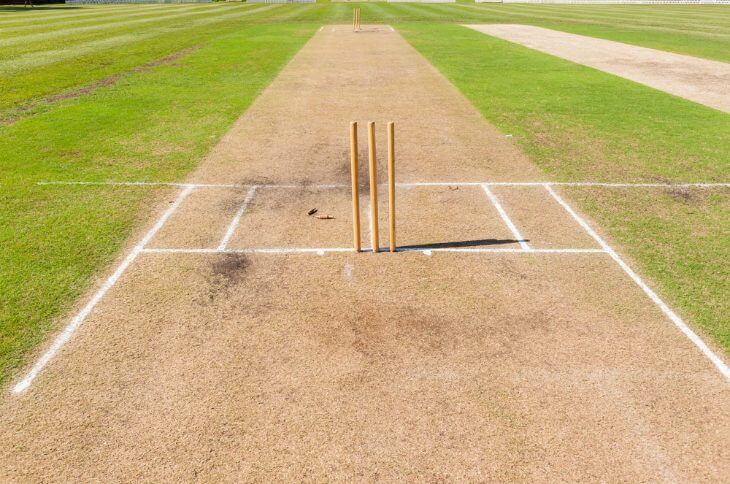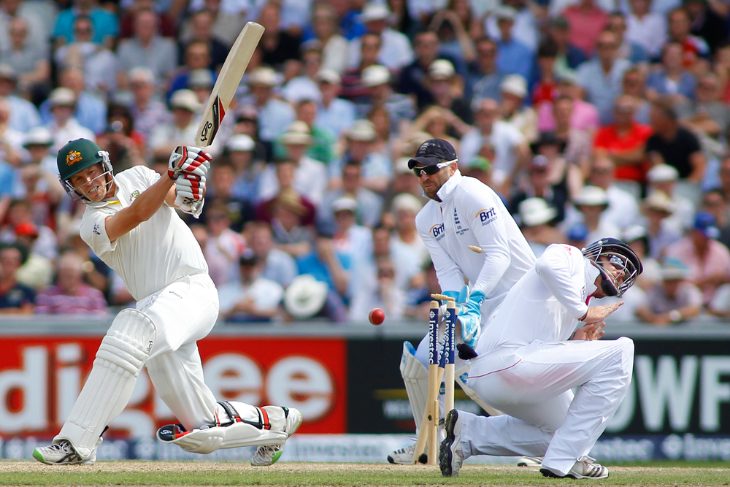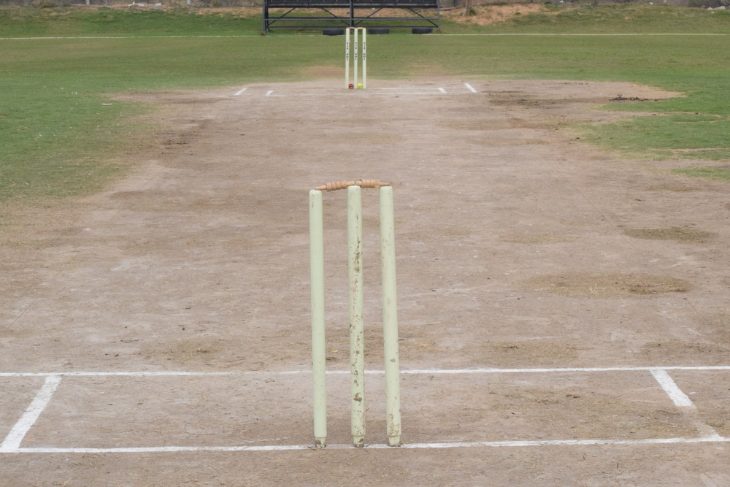Introduction
Ever placed a bet on a cricket match and felt the frustration when the outcome didn't quite match your expectations? You're not alone. Cricket betting is an intricate world, with numerous factors influencing the final result. One such factor, often overlooked but of paramount importance, is the weather. In this article, we delve deep into the intriguing connection between weather conditions and cricket betting outcomes.
Cricket isn't just a sport; it's a passion that unites millions of fans worldwide. Whether you're a die-hard supporter or a casual spectator, the thrill of witnessing a game's twists and turns is undeniable. But have you ever stopped to consider how something as seemingly unrelated as the weather can affect the outcome of a cricket match?
Understanding Cricket Betting
Before we dive into the intricacies of weather's impact on cricket betting, let's first get a handle on the basics of cricket betting itself.
Cricket betting is much like any other form of sports betting, where enthusiasts wager on the outcome of a game or specific events within a match. You can bet on who will win the match, the top run-scorer, the leading wicket-taker, and a plethora of other variables. The odds provided by bookmakers are influenced by various factors, including team form, player form, statistics, venue conditions, and, you guessed it, weather conditions.
The world of cricket betting is a dynamic one, with odds changing in real-time as the game progresses. This means that cricket punters are constantly assessing and reassessing their bets based on the unfolding game and external factors, including the weather.
As you can imagine, making informed bets requires a deep understanding of the sport, including its rules, nuances, and the various factors that can sway the outcome. In this regard, knowledge is power. And when it comes to cricket betting, knowledge of the weather's impact can be a game-changer.
Rain: The Game Changer
In the world of cricket, rain is the ultimate wildcard. It has the power to turn a seemingly certain victory into an agonizing draw or a shocking defeat. When rain interrupts play, it can lead to a wide range of scenarios, each with its own impact on the game and betting outcomes.
The first and most obvious consequence of rain is match delays. When the heavens open up, play is suspended, and everyone - players, fans, and bettors alike - must wait for the weather to clear. These delays can disrupt a team's momentum, break a batsman's concentration, or give bowlers an unexpected rest. For cricket punters, this can be a frustrating time, as bets may hang in the balance.
In cases of persistent rain, matches can be reduced in overs, leading to a revised target for the chasing team. This is where the Duckworth-Lewis-Stern (DLS) method comes into play. It's a complex mathematical formula used to adjust targets in rain-affected matches. Understanding how DLS works and its potential impact on the game is essential for cricket bettors looking to make informed wagers.
But it doesn't end there. The rain-soaked outfield can make fielding a slippery and challenging task. Balls that would typically reach the boundary might slow down, and fielders may struggle to grip the ball. This can result in extra runs or wickets that wouldn't have occurred in dry conditions.
In a longer format of the game, such as Test matches, rain can be the great equalizer. A draw can become a viable outcome, especially if the majority of the match is affected by rain. For bettors, this can be a frustrating scenario, as they may have placed bets on a clear result.
The Influence of Temperature
While rain is the unpredictable disruptor, temperature is the slow and steady influencer in cricket. It doesn't create sudden game-changing moments like rain, but it can gradually shift the balance in favour of one team or another.
In hot conditions, the pitch can dry out and crack, making it conducive to spin bowling. Spinners can extract more turn, and batting can become challenging. This is why you often see teams from subcontinental regions performing well in such conditions, as they are accustomed to playing on spin-friendly pitches.
Conversely, colder conditions can negate some of the advantages spinners enjoy. The ball may not grip the surface as much, and the pace bowlers may struggle to extract swing. Batsmen, too, may find it easier to play their shots in milder temperatures.
It's worth noting that extreme heat can also affect player stamina. Long hours in the field under a blazing sun can lead to fatigue, making concentration and decision-making lapses more likely. For bettors, understanding how temperature can affect the pitch and player performance can be a valuable insight when predicting match outcomes.
Humidity's Hidden Effects
While humidity might not be the first thing that comes to mind when thinking about cricket, its impact on the game can be surprisingly significant. Humidity levels can influence various aspects of a cricket match, subtly affecting players' performance and, in turn, betting outcomes.
One of the key ways humidity can impact cricket is by influencing how the ball behaves. In high humidity conditions, the cricket ball can become heavier. This added weight can affect both bowlers and batsmen. For bowlers, it can make it more challenging to generate swing, reducing their effectiveness. Conversely, batsmen may find it easier to time their shots due to the heavier ball, potentially leading to higher scores.
On the flip side, in low humidity conditions, the cricket ball can become lighter. This can result in more pronounced swing and seam movement, which tends to favour the bowlers. Spinners might also find it easier to grip the ball and impart spin. Understanding how humidity affects ball behaviour can help you gauge how it might impact the match and make more informed betting choices.
Humidity also plays a role in the outfield's condition. In high humidity, the outfield may remain damp, causing the ball to slow down when it should reach the boundary. This can lead to fewer boundaries and lower run-scoring. Conversely, in low humidity, the outfield tends to be drier, allowing the ball to travel faster, potentially resulting in more boundaries.
Moreover, high humidity can be physically taxing on players, leading to fatigue and reduced stamina. Dehydration becomes a real concern, which can impact decision-making and concentration. For bettors, keeping an eye on the humidity levels can offer insights into how players might perform under these conditions.

Wind: A Swinging Factor
Wind is another subtle yet crucial factor in the world of cricket. It can influence the trajectory of the ball in the air, making it challenging for both bowlers and batsmen to predict its path accurately. Understanding the wind's direction and speed is essential for assessing how it might affect the match.
When the wind blows across the pitch, it can aid the movement of the cricket ball. For fast bowlers, this means more swing, both conventional and reverse. Batsmen facing these conditions may struggle to judge the line and length of deliveries accurately, increasing the likelihood of dismissals.
Conversely, when the wind blows parallel to the pitch, it can negate swing and seam movement. This typically results in flatter pitches, making batting easier. Understanding the wind's impact on ball movement can help you make more accurate predictions about a match's outcome.
Moreover, captains often position fielders strategically to capitalise on the wind's influence. A strong wind can carry the ball further, leading to potential boundary opportunities. Conversely, a wind against the batsmen can make clearing the boundary a more challenging task.
Pitch and Weather Interplay
Now that we've uncovered how weather factors like rain, temperature, humidity, and wind can impact cricket, it's time to explore the fascinating interplay between these conditions and the pitch itself. The pitch is the heart of any cricket match, and its characteristics can change significantly depending on the weather.
Let's start with the most obvious weather-related pitch change: rain. When rain falls, it can soften the pitch. This makes it more suitable for batting, as the ball doesn't bounce as high or carry as much pace. For bettors, understanding the pitch's state after rain can help assess whether the balance of power might shift in favour of the batsmen.
However, prolonged rain can also make the pitch unpredictable. It can develop cracks and irregularities that make it difficult for both batsmen and bowlers. In such cases, placing bets based on historical pitch data alone might not yield accurate results.
Temperature and humidity also leave their mark on the pitch. In hot and dry conditions, the pitch tends to harden, favouring fast bowlers who can extract more bounce and pace. Conversely, in damp and humid conditions, the pitch can become slower, making it conducive to spin bowling.
Wind, with its influence on ball movement, can also affect the pitch's behaviour. When the wind aids swing, the ball can move late, making it challenging for batsmen to line up their shots. On pitches that already offer assistance to bowlers, this can amplify the difficulty for the batting side.
As a cricket bettor, keeping an eye on the pitch conditions, especially in conjunction with the prevailing weather, can provide valuable insights into how a match might unfold. Understanding the relationship between these factors can help you make more informed bets.
Historical Analysis of Weather Impact
In the world of cricket, history often provides valuable lessons. By examining past matches played under specific weather conditions, we can gain a deeper understanding of how weather affects the game and, by extension, betting outcomes.
For instance, looking at matches played on rainy days can reveal trends. Do certain teams perform better or worse when rain interrupts play? Do bowlers or batsmen tend to excel in these conditions? Historical data can help you identify patterns that might not be immediately apparent when examining individual matches.
Similarly, studying matches played in extreme temperatures or high humidity can yield valuable insights. Does a particular team struggle in sweltering conditions? Do spinners dominate on humid days? By delving into historical records, you can uncover trends that might give you an edge in your cricket betting strategy.
Wind can also play a role in historical analysis. Researching matches played in windy conditions can help you understand which teams or players tend to thrive when the wind is in their favour. This knowledge can be invaluable when making bets on matches with similar weather forecasts.

Strategies for Weather-Informed Betting
Now that we've established the profound impact of weather on cricket, it's time to discuss practical strategies for weather-informed betting. Armed with a deep understanding of how weather conditions affect the game, you can make more calculated wagers and increase your chances of success.
Stay Updated with Weather Forecasts
This may sound obvious, but it's essential. Before placing your bets, check the weather forecast for the match location. Sites like the BBC Weather or the Met Office provide reliable forecasts. Pay attention to the expected conditions throughout the day, including the likelihood of rain, temperature, humidity, and wind speed and direction.
Understand Pitch and Venue
Research the historical characteristics of the pitch and venue where the match will be played. Some pitches are notorious for favouring bowlers, while others are known for high-scoring encounters. Consider how the weather conditions are likely to interact with these pitch characteristics.
Evaluate Team Strengths and Weaknesses
Take into account how the weather might impact the strengths and weaknesses of each team. For instance, if a team relies heavily on its fast bowlers, they might struggle in humid conditions that favour spinners. Conversely, a team with formidable spinners might find success on a dry, dusty pitch.
Consider Player Performance Records
Dive into individual player records in various weather conditions. Some batsmen may excel on rainy days, while certain bowlers thrive in hot and dry conditions. Understanding these player-specific tendencies can help you make more precise player-based bets.
Factor in Toss Outcomes
The toss plays a significant role in deciding which team bats or bowls first. Depending on the weather conditions, winning the toss can be a considerable advantage. Research how teams tend to perform when they bat or bowl first in specific weather conditions.
In-Play Betting
Keep a keen eye on in-play betting opportunities. If you're watching the match live and see that the weather is beginning to change, you can adjust your bets accordingly. For example, if rain is imminent and you've bet on a high-scoring match, consider placing bets favouring the bowlers.
Use Live Data Feeds
Utilize live data feeds that provide real-time information on the match, including weather conditions, player statistics, and ball-by-ball updates. These tools can help you make on-the-fly decisions and adjust your bets as the game progresses.
Practice Bankroll Management
Betting responsibly is paramount. Set a budget for your cricket betting activities and stick to it. Don't let weather-induced emotions sway you into making impulsive bets. Instead, use the insights you've gained to make informed decisions within your predetermined budget.
Conclusion
As we conclude our exploration of the impact of weather on cricket betting outcomes, it's clear that understanding how weather conditions influence the game can be a game-changer for cricket punters. Weather is not just a variable; it's a dynamic force that can tip the scales in favour of one team or another, affecting everything from pitch conditions to player performance.
In the complex world of cricket betting, no stone should be left unturned. Weather, often overlooked, can be a critical factor that sets the stage for victory or defeat. By incorporating weather insights into your betting strategy, you can gain an edge and improve your chances of success.
For more information:
- Best Cricket Betting Sites in the UK (Review)
- A Beginner's Guide to Cricket Betting in the UK
- The Influence of Pitch and Ground Conditions on Betting Odds
- A Deep Dive into Test Match Cricket Betting


